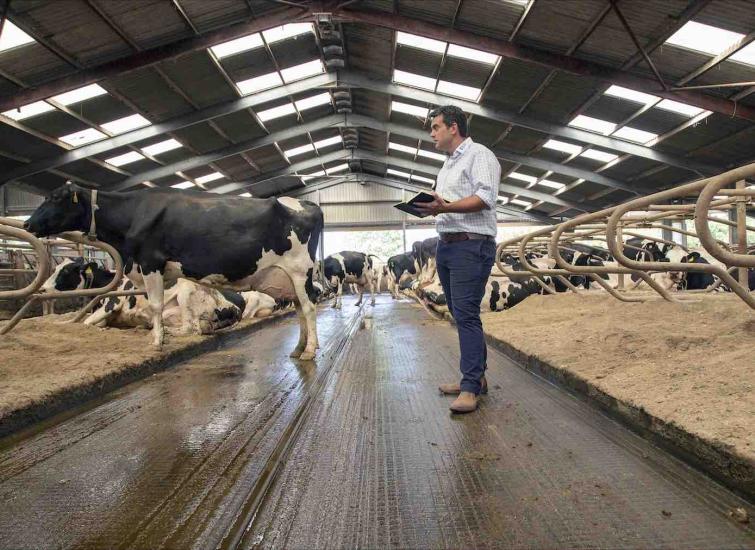Advanced Robot’s experience means they are always challenging me to get the best out of the cows, they maintain the herd’s health status whilst also improving performance.
Making the right decisions with milk price uncertainty
As dairy farmers continue to see uncertainty in the market we focus on key questions to ask to help maintain margin...

The milk report report on the markets from Chris Walkland hasn't been cheery reading of late, but as always, Advanced Nutrition are careful to steer our clients towards a more positive path and maximising margin where we can! We understand conditions are getting worse and farmers are being squeezed from every angle. So what can we do?
Planning your way through these tough times is what’s needed - a plan that considers both short term and crucially long-term impacts to the business. Without a plan, it’s easy to resort to knee jerk reactions and whilst broad suggestions of reducing concentrates, feeding cheaper raw materials, may well be the right decisions - are they choices that have been considered in the context of your own farm business? Have you thought about the hidden costs, as a result of your decisions. Consider for example, turning your cows out as the milk price drops – what will that do in terms of the performance of your cows? If performance drops, you may well be in the same position even though you’ve saved on feed costs.
Key to these decisions is to monitor and keep an eye on margins. Be selective about your cost cutting and understand the impact that it will have. So, what should your plan be and what areas should you be focusing on?
Step 1 is to analyse the effect that a drop in milk price has on margins by calculating your variable costs to produce a litre of milk. We must also consider the predicted milk price in the near future. While we can’t make decisions based on what the milk price ‘might’ or ‘should’ be, we do have to use it a measure to aid decision making.
Dropping production to save cost on fertiliser or feed can look attractive in the short term, and for some this may be the most economic approach, but for most it has the potential to increase overhead cost. In the medium and long term it may achieve no actual financial gain.
Step 2 is to take stock of your forage, create a budget and work out what you’ve got to feed in the winter. Remember to assess the quality as well as quantity. Then you can start to make informed decisions on extras that may be needed, such as bulky feeds.
Feed efficiency of the diet is the next area to look at. Getting the balance right is usually more cost effective than just taking things out of the diet.
Focus on areas where you can gain the most. Transition and early lactation cows should really be at the forefront. Turning out dry cows to cut feed costs, for example, will always bite back as vet bills rise as a result of poor transition. It’s well documented that getting the transition period right results in better performance and longevity of the herd.
Of course, decisions will be farm specific and Advanced Nutrition customers can take great confidence from the fact that we are working hard to create real solutions to deliver the short, medium and longer term goals during these unusual times.
If you have any questions on the above, please just give myself or your local Advanced Nutrition Ruminant Specialist a call.
〈 BACK



